Trumpet Honeysuckle
- October 18, 2023
- 0 comment
Trumpet Honeysuckle, scientifically known as Lonicera sempervirens, is a charming and versatile flowering vine that has won the hearts of gardeners and nature enthusiasts alike. This native North American plant is celebrated for its striking trumpet-shaped blossoms, which come in various shades of red, coral, and orange, exuding a sweet and intoxicating fragrance that attracts pollinators, especially hummingbirds.
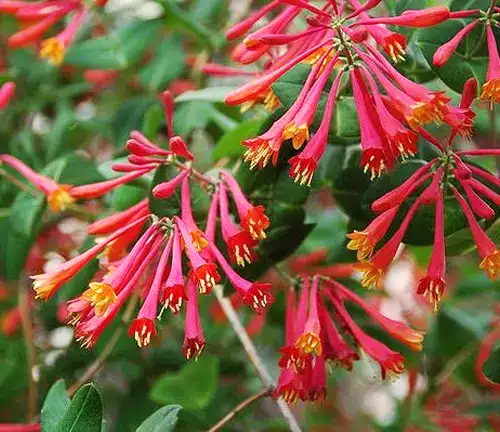
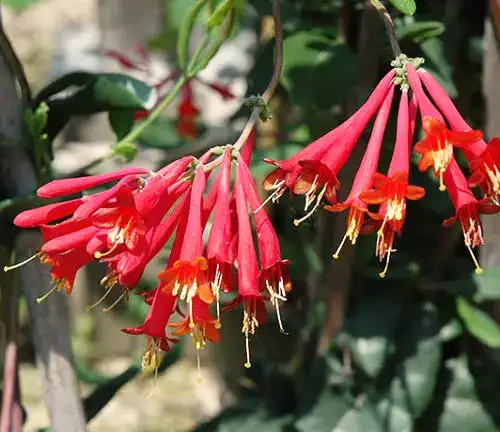
Its elegant, tubular flowers bloom throughout the spring and summer, adding a vibrant splash of color to gardens, arbors, and fences. Trumpet Honeysuckle’s lush, dark green foliage remains evergreen in many regions, making it a reliable and visually appealing choice for both ornamental and functional purposes. As a vigorous and easy-to-grow vine, it can quickly cover structures or trellises while providing food and shelter for local wildlife.
Its low-maintenance characteristics, adaptability to different soil types, and tolerance of partial shade make it a favorite among gardeners seeking to enhance their outdoor spaces with a touch of natural beauty and wildlife support. Whether adorning your landscape or attracting wildlife, the Trumpet Honeysuckle is a delightful addition to any garden.
| Characteristics | Description |
| Scientific Name | Lonicera sempervirens |
| Common Names | Trumpet Honeysuckle, Coral Honeysuckle, Woodbine |
| Plant Type | Deciduous or Evergreen Vine |
| Mature Height | 10-20 feet (3-6 meters) |
| Mature Spread | 3-6 feet (1-2 meters) |
| Bloom Time | Spring through summer |
| Flower Color | Red, Coral, Orange |
| Fragrance | Sweet, Attractive to Hummingbirds |
| Foliage | Dark green, Evergreen in many regions |
| Sun Exposure | Full sun to part shade |
| Soil Type | Well-draining, adaptable to various soil types |
| Drought Tolerance | Moderate to High |
| Cold Hardiness Zones | 4-9 |
| Pruning | Prune to shape and control growth in late winter or early spring |
| Propagation | Seeds, stem cuttings |
| Wildlife Attraction | Attracts hummingbirds, butterflies, and bees |
| Common Uses | Ornamental vine, ground cover, erosion control, wildlife habitat |
Botanical Beauty of “Trumpet Honeysuckle”
The “Trumpet Honeysuckle,” also known as Lonicera sempervirens, is a botanical marvel that captivates gardeners and nature enthusiasts with its inherent beauty. This native North American vine graces our landscapes with a dazzling display of trumpet-shaped flowers that come in a range of vibrant hues, including shades of red, coral, and orange. These enchanting blossoms not only add visual charm to gardens but also emit a sweet, heady fragrance that beckons pollinators, particularly the whimsical hummingbirds. As the first article in our series on “Trumpet Honeysuckle,” let’s delve into the captivating botanical beauty of this remarkable vine.

Woodland Elegance
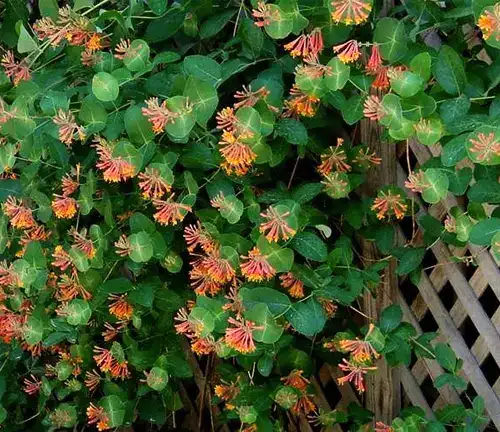
One of the distinctive features of the Trumpet Honeysuckle is its ability to bring a touch of woodland elegance to any garden. With its dark green foliage that often remains evergreen, this vine adds a sense of year-round vitality to your outdoor space. The lush leaves and twining vines lend a natural and organic appeal, making it a perfect choice for trellises, arbors, or fences. The plant’s graceful growth patterns infuse an air of sophistication, making it an ideal choice for those seeking to create a refined and picturesque garden setting.
Ecological Importance
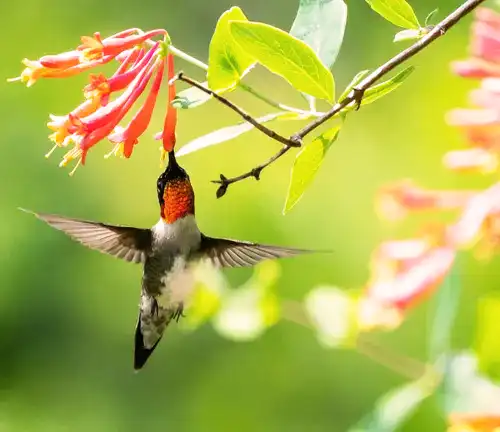
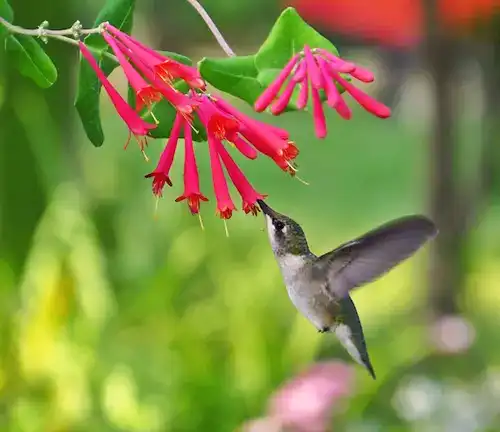
Beyond its aesthetic allure, the Trumpet Honeysuckle plays a pivotal role in supporting local ecosystems. Its vibrant, tubular flowers are a magnet for pollinators, especially hummingbirds, which rely on these nectar-rich blooms for sustenance. In turn, the vine contributes to the intricate web of biodiversity by providing food and shelter to a variety of wildlife. By cultivating this native species, you are not only enhancing the natural beauty of your surroundings but also actively participating in the preservation of local fauna.
Cultivation and Conservation
The Trumpet Honeysuckle is a remarkably adaptable and low-maintenance plant, making it an excellent choice for both novice and experienced gardeners. It thrives in a variety of soil types and can tolerate partial shade, making it versatile in its planting requirements. As we explore its cultivation, it’s worth noting that the conservation of this native species is vital. By planting and nurturing Trumpet Honeysuckle, we can help ensure its continued presence in the ecosystem while also supporting the pollinators that rely on it.
Fragrance
One cannot discuss the Trumpet Honeysuckle without mentioning its exquisite fragrance. The sweet and alluring scent of its blossoms adds an extra layer of sensory delight to your garden. It’s not just humans who appreciate this fragrance; it’s a beacon for hummingbirds and other nectar-loving creatures, making your garden a hub of natural activity.
Soil Stabilization
Besides its aesthetic and ecological benefits, Trumpet Honeysuckle also offers practical advantages, particularly in soil stabilization. Its robust root system helps prevent erosion, making it a valuable addition to landscapes in need of soil conservation. This aspect of the vine’s capabilities underscores its multifaceted appeal, as it goes beyond mere ornamentation to serve as a functional component of your garden.
Common Uses
The versatility of Trumpet Honeysuckle extends to its common uses in gardens and landscapes. It can be trained to climb trellises, decorate arbors, or even serve as ground cover, enhancing the visual appeal of any outdoor space. Its ability to attract and nourish wildlife further broadens its range of applications, as it transforms your garden into a thriving ecosystem.
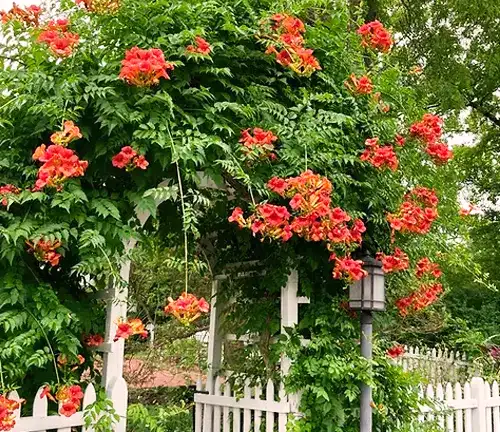
Benefits
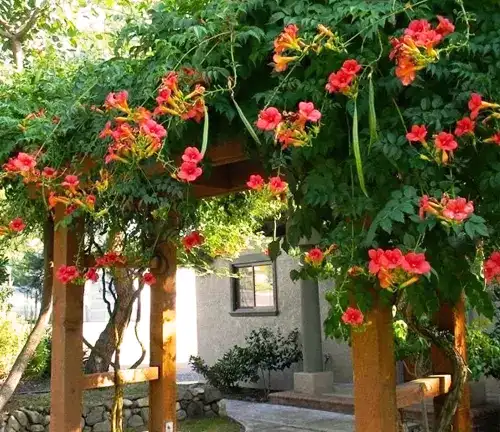
In conclusion, the Trumpet Honeysuckle offers a wealth of benefits, both aesthetic and ecological. Its botanical beauty, woodland elegance, and ecological importance make it a remarkable addition to any garden. Its low-maintenance requirements, adaptability, and soil stabilization properties ensure it is a practical choice for conscientious gardeners. Moreover, its fragrance and common uses add extra layers of charm to your outdoor sanctuary. As we continue to explore this extraordinary vine, we will delve deeper into its care and cultivation, so you can fully appreciate the myriad advantages it brings to your garden.
Different Species
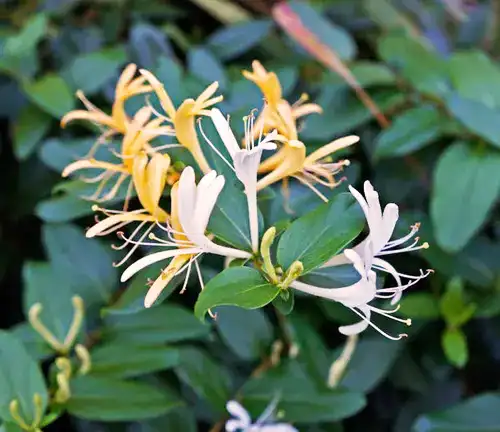
Japanese Honeysuckle
(Lonicera japonica)
This invasive species is known for its fragrant white or yellow flowers and is native to eastern Asia. It has become naturalized in many parts of North America.
European Honeysuckle
(Lonicera periclymenum)
Native to Europe and parts of Asia, this species features fragrant, pink or yellow blossoms and is often grown as an ornamental vine.
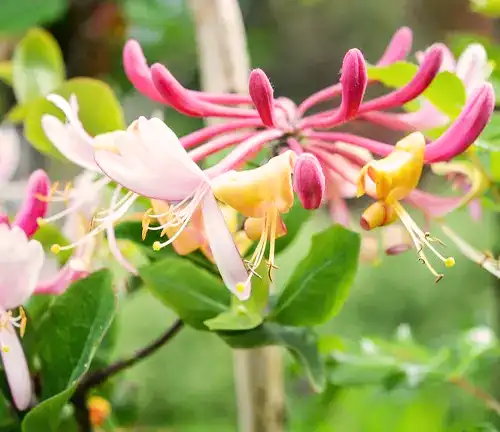

Climbing Honeysuckle
(Lonicera etrusca)
Native to the Mediterranean region, this honeysuckle variety is cultivated for its fragrant, tubular flowers, which can vary in color from yellow to red.
Himalayan Honeysuckle
(Lonicera himalayica)
Native to the Himalayas, this species has attractive clusters of tubular, orange to red flowers and is occasionally grown as an ornamental plant.
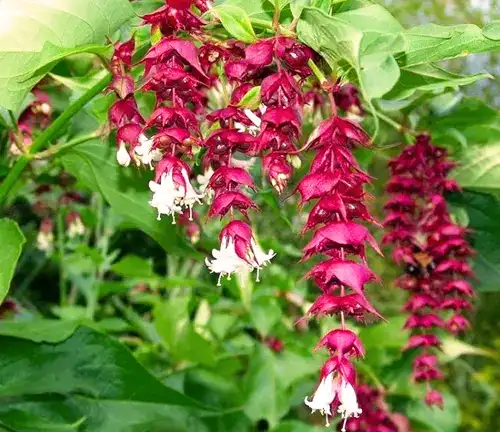
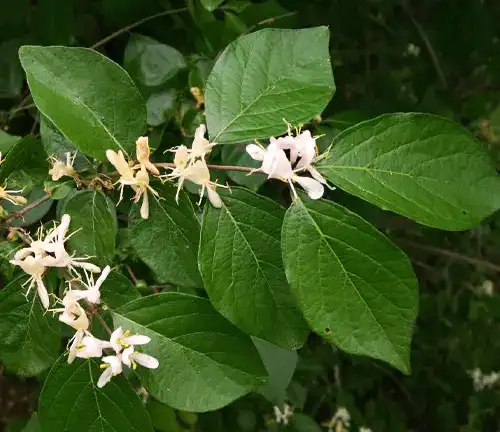
Amur Honeysuckle
(Lonicera maackii)
This invasive species hails from eastern Asia and is known for its creamy white to yellow flowers. It has become a problematic weed in some North American ecosystems.
Italian Honeysuckle
(Lonicera caprifolium)
Native to Europe, this species produces fragrant, creamy-white flowers and is cultivated for its ornamental value.
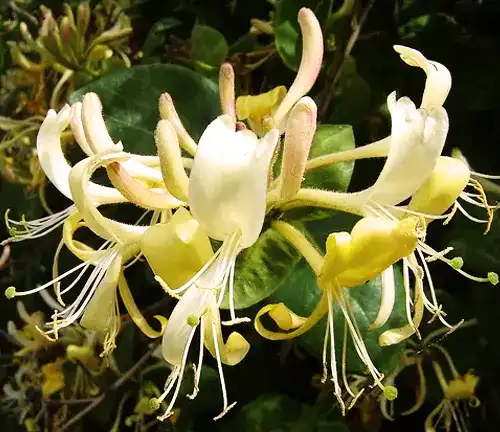
Frequently Asked Questions (FAQs)
- What is Trumpet Honeysuckle?
Trumpet Honeysuckle (Lonicera sempervirens) is a native North American vine known for its vibrant trumpet-shaped flowers and attractive, evergreen foliage. - What are the flower colors of Trumpet Honeysuckle?
The flowers of Trumpet Honeysuckle come in various shades of red, coral, and orange. - When does Trumpet Honeysuckle bloom?
Trumpet Honeysuckle typically blooms in spring and continues to produce flowers throughout the summer months. - Is Trumpet Honeysuckle fragrant?
Yes, the blossoms of Trumpet Honeysuckle emit a sweet and captivating fragrance that is particularly attractive to hummingbirds. - What is the ideal sun exposure for Trumpet Honeysuckle?
Trumpet Honeysuckle prefers full sun to partial shade, making it a versatile plant for different garden settings. - How tall and wide does Trumpet Honeysuckle grow?
Trumpet Honeysuckle can reach a mature height of 10-20 feet (3-6 meters) and a spread of 3-6 feet (1-2 meters). - What are the cold hardiness zones for Trumpet Honeysuckle?
Trumpet Honeysuckle is typically hardy in USDA zones 4-9, although this can vary slightly depending on local conditions. - How do I care for and prune Trumpet Honeysuckle?
Prune Trumpet Honeysuckle in late winter or early spring to shape and control its growth. It is generally a low-maintenance plant. - Does Trumpet Honeysuckle attract wildlife?
Yes, Trumpet Honeysuckle is a favorite of hummingbirds, butterflies, and bees, making it an excellent choice for wildlife-friendly gardens. - Can Trumpet Honeysuckle be used for erosion control?
Yes, the robust root system of Trumpet Honeysuckle makes it suitable for soil stabilization and erosion control in gardens and landscapes. - Is Trumpet Honeysuckle an invasive species?
No, Trumpet Honeysuckle (Lonicera sempervirens) is not considered invasive like some other honeysuckle species. It is a native plant in North America. - How can I propagate Trumpet Honeysuckle?
Trumpet Honeysuckle can be propagated from seeds or stem cuttings, making it relatively easy to cultivate. - What are some common uses for Trumpet Honeysuckle?
It is commonly used for ornamental purposes, such as covering trellises, arbors, and fences. It can also be used for ground cover and wildlife habitat enhancement.


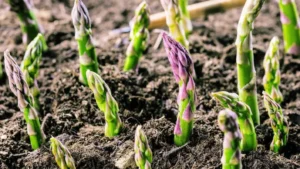

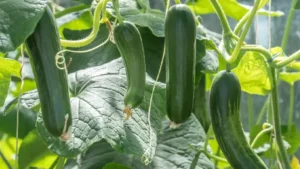
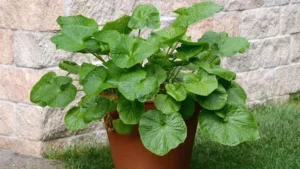
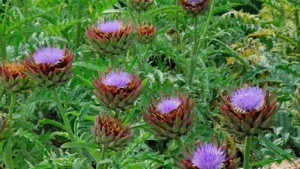


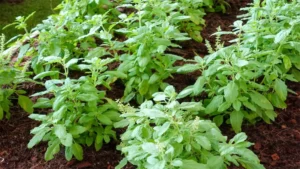
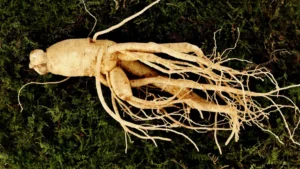



Leave your comment